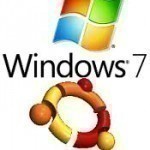How to Dual Boot Windows 7 and Ubuntu
Windows 7 is the latest operating system that Microsoft released. It replaced Windows Vista in 2009. Windows 7 was invented to address fatal flaws in Windows Vista that the general public disliked. While correcting major concerns about file accessibility, design, and compatibility issues with popular applications, Windows 7 combined some of the beneficial aspects of both Windows XP and Windows Vista.
What is Ubuntu?
Ubuntu is a Linux-based operating system that was released in 2004. It is very similar to Windows 7 in design and accessibility. Ubuntu is completely free and provides its users with the most powerful features. Since its release, Linux has distributed a new version of Ubuntu every six months and provides technical support for each version for eighteen months by releasing patches, fixes, and updates on a regular basis. Ubuntu is the most popular Linux distribution and has an estimated global user count of over 12 million users worldwide.
Windows 7 VS Ubuntu
Windows 7 and Ubuntu are similar in many ways, particularly in their graphical design. Both Windows 7 and Ubuntu have a smooth, glossy, “futuristic” design and provide quick access to files as well as powerful security, networking, and disk space conservation tools. However, Windows 7 is a commercial product that Microsoft sells, while Ubuntu is a free and open source program that Linux provides. While each of these operating systems is impressive, only Ubuntu provides a means to combine the two.
How to Dual Boot Windows 7 and Ubuntu
Although there is already a method of partitioning a hard drive in order to run Windows 7 and Ubuntu simultaneously, a much easier method that even the most computer illiterate person can utilize exists. It is known as Ubuntu Windows Installer. The Ubuntu Windows Installer allows Windows (including Windows 7) users to run Ubuntu alongside their current operating system. The Ubuntu Windows Installer automatically takes measures to allocate disk space in a separate partition of the primary hard drive and installs Ubuntu on the computer. From then on, the user has the ability to run Ubuntu from within Windows 7 itself, allowing users to take advantage of features from both Ubuntu and Windows 7.



Comments - No Responses to “How to Dual Boot Windows 7 and Ubuntu”
Sorry but comments are closed at this time.